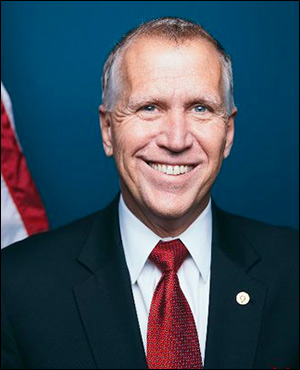By Jim Ellis
Nov. 11, 2020 — Though the North Carolina ballot reception period continues through tomorrow, Democratic US Senate nominee Cal Cunningham, after leading in polling throughout most of the race, conceded late yesterday to Sen. Thom Tillis (R).The remaining votes are from people who requested absentee ballots that have yet to be returned. Estimates suggested approximately 116,500 could be returned but it became clear that not all of them would be sent. Each had to be postmarked on Nov. 3 and placed in the mail stream. With Sen. Tillis leading by exactly 95,000 votes and an estimated 30 percent of the absentee ballot requests going to Republican voters, it became obvious that there would not be enough available votes to turn the election Cunningham’s way.
The Tillis victory means that Republicans now control 49 Senate seats with only Alaska remaining until the two Georgia runoffs are held on Jan. 5. In Alaska, now with 69 percent of the vote reporting, Sen. Dan Sullivan (R) leads Dr. Al Gross (I/D) by 52,995 votes or by a 58.5 – 36.4 percent margin. The Alaska ballot reception period lasts through Friday, so we should see this race being called shortly, and almost assuredly for GOP Sen. Sullivan.
In the House, we see several calls being made, some of which had been obvious for some time. Democratic Reps. Tom O’Halleran (D-AZ-1), Jimmy Gomez (D-CA-34), and Kim Schrier (D-WA-8), along with Republican Rep. Ken Calvert (R-CA-42) and open seat contender Jay Obernolte (R-CA-8) were all declared official winners. All had been leading throughout the post-election period and it was just a matter of time before a declaration was made for each.
Two major competitive races were called yesterday. In California, where the post-election counting is moving along at a brisker pace than in the past, Orange County Supervisor Michelle Steel (R) has defeated freshman Rep. Harley Rouda (D-Laguna Beach) in the 48th CD. The district, which contains most of the Orange County coastline and was in Republican hands for 30 years in the person of Rep. Dana Rohrabacher (R) before Rouda won the seat in 2018, returns to the GOP.






